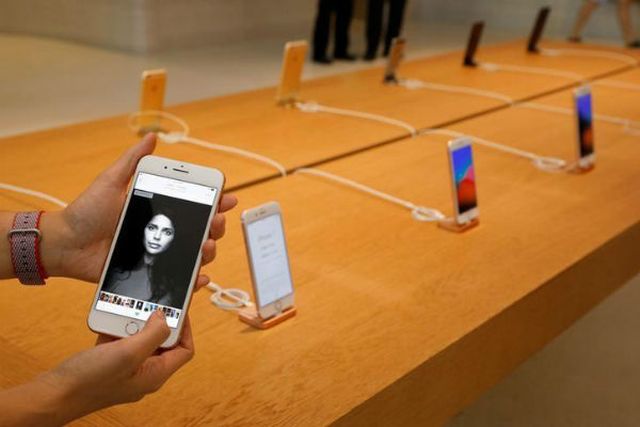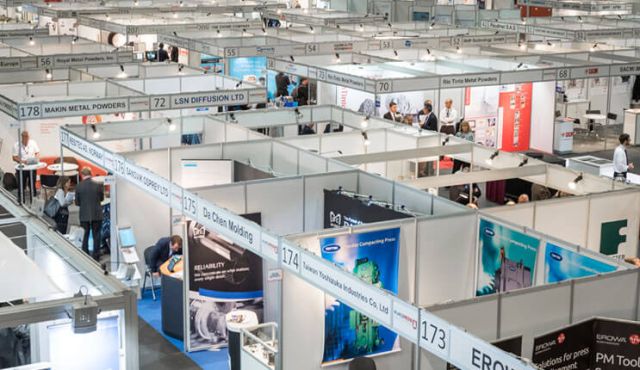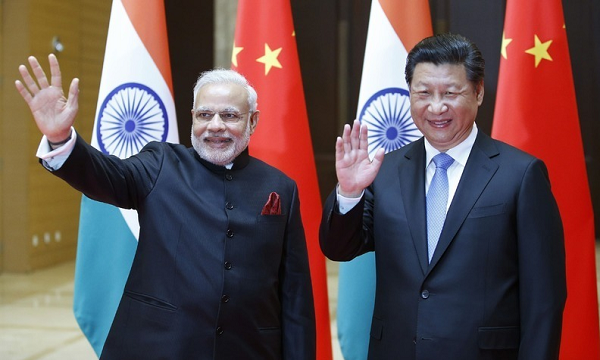
by Editor | May 25, 2021 | Branding, Corporate, Corporate Reports, Marketing Basics, Markets, Networking, Online Marketing, Sales, Social Media, Technology
 San Francisco : Essentially a hardware-focused firm, Apple is falling behind in the Artificial Intelligence (AI) race with Google and Amazon racing ahead while embracing the open-source and collaborative approach in the emerging field of AI, Fortune reported.
San Francisco : Essentially a hardware-focused firm, Apple is falling behind in the Artificial Intelligence (AI) race with Google and Amazon racing ahead while embracing the open-source and collaborative approach in the emerging field of AI, Fortune reported.
According to Mohanbir Sawhney, McCormick Foundation professor of technology at the Kellogg School of Management at Northwestern University, sheets of glass are simply no longer the most fertile ground for innovation.
“That means Apple urgently needs to shift its focus and investment to AI-driven technologies, as part of a broader effort to create the kind of ecosystem Amazon and Google are building quickly,” Sawhney wrote in Fortune.
According to him, Apple has reached its peak with “super premium” iPhone X and “does not represent the beginning of the next 10 years of the smartphone, as Apple claims”.
Apple launched the iPhone X globally on Friday.
Players pursue innovation along a vector of differentiation until the vector runs out of steam.
“When that happens, the focus of innovation shifts to a different vector and new market leaders emerge. We have seen this pattern several times in mobile phone innovation over the past three decades,” Sawhney said.
The vector of differentiation is now shifting from hardware to AI and AI-based software and agents.
“As AI-driven phones like Google’s Pixel 2 and virtual agents like Amazon Echo proliferateaToday’s smartphones will likely recede into the background,” he stressed.
Google Pixel phones offers great photo-enhancement features and deeper hardware-software integration driven by AI-based technology.
The second edition of Pixel features 5-inch display, 4GB RAM, 12MP rear and 8MP front camera, and 2,700mAH battery.
Google will bring Pixel 2 XL (6-inch display) into the Indian market from November 15 onwards.
The Amazon Echo enables natural conversations through the Alexa virtual agent.
“Apple has only to look at Motorola, Nokia, and Blackberry to understand how quickly a leader can fall from the peak in this market, and do its best to avert this outcome,” Sawhney added.
—IANS

by Editor | May 25, 2021 | Markets, Technology
 By Nishant Arora,
By Nishant Arora,
New York : There is no denying the fact that Artificial Intelligence (AI) is one phenomenon that has stood out among other emerging technologies. Sensing great possibilities, global chip giant Intel has now joined the AI bandwagon in a big way.
AI is not new to the world of technology but the past five years have given AI believers a reason to cheer as its uses are increasing across industries – from health care to autonomous vehicles — say AI experts at Intel.
“AI capabilities are greatly supplementing humans to do great work in less time in sectors like healthcare, banking and finance, transport, energy and robotics, etc. It will be interesting to see how this whole AI thing evolves with time,” Bob Rogers, Data Scientist, AI and Analytics, Data Center Group at Intel, told IANS here.
“But AI is not going to replace humans soon. Not in my lifetime at least. There will be apprehensions but this is true to any disrupting technology,” Rogers added.
Intel is aggressively building advanced processor “platforms” — from edge computing to Cloud that allows enterprises build intelligent solutions based on AI.
Intel will soon introduce the world’s first family of AI-enabled “Nervana Neural Network Processor” (NNP) that aims to revolutionise AI computing.
Intel has also collaborated with Facebook for sharing technical insights to bring the new generation of AI hardware to users.
Using Intel Nervana technology, companies will be able to develop entirely new classes of AI applications that maximise the amount of data processed and enable customers to find greater insights — transforming their businesses.
“AI is in early stages but last five years have seen a tremendous rise. We may still be scratching the surface at the moment but wait for a lot more real-life AI applications as we introduce Nervana,” Amir Khosrowshahi, VP and CTO, Artificial Intelligence Products Group, Intel, told IANS.
AI algorithms will become smarter as more data seeps in. Intel is tying the AI-ML knot to make the massive sets of data work for you,” he added on the sidelines of Intel “SHIFT” event here.
Intel CEO Brian Krzanich, believes that AI will bring significant new opportunities to transform businesses.
To drive AI innovation, Intel is making strategic investments spanning technology, R&D and partnerships with business, government, academia and community groups.
“We have also invested in startups like Mighty AI, Data Robot and Lumiata and have invested more than $1 billion in companies that are helping to advance artificial intelligence,” Krzanich said recently.
Edge computing is the next major step in the evolution of cloud and enterprise computing and Intel’s new “Movidius” chip aims to deliver processing power optimised for AI into edge devices, like cameras and industrial robots.
Intel has also acquired Mobileye — a global leader in the development of computer vision and machine learning, data analysis and mapping for autonomous driving. Intel’s Automated Driving Group (ADG) will combine its operations with Mobileye.
The company estimates the vehicle systems, data and services market opportunity to be up to $70 billion by 2030.
Intel acquired deep learning start-up Nervana Systems — led by former Qualcomm researcher Naveen Rao and co-founded by Khosrowshahi — last year.
“On top of the Nervana processor, we have built a full stack of software libraries, machine learning innovations and solutions which can be applied to text, speech and other issues,” Khosrowshahi said.
To make its AI dream a success, Intel is also banking upon India. Intel India has trained 9,500 developers, students and professors across 90 organisations in the past six months in AI.
The company has collaborated with 40 academic institutions that are using the technology for scientific research and 50 public and private organisations across e-commerce, healthcare, technology, defence, and banking and financial services.
The move is reducing AI entry barriers for developers, data scientists and students through developer focused events and ‘Code Modernisation’ workshops.
“AI is just about to explode around you. Time to fasten your seat belt and enjoy the journey with Intel,” Khosrowshahi said.
(Nishant Arora is in New York at the invitation of Intel. He can be contacted at nishant.a@ians.in)
—IANS

by Editor | May 25, 2021 | Branding, Business Summit, Events, Marketing Basics, Markets, Technology
 By Nishant Arora,
By Nishant Arora,
New Delhi : For a technology reporter, the word “mobile” evokes automatic interest. And for a tech junkie, a Mobile Congress means a platform where you get to see new gadgets, upcoming smartphone technologies, various prototypes pertaining to Artificial Intelligence (AI)-based solutions, Augmented Reality (AR) and Virtual Reality (VR) being showcased, and so on.
In its first-ever edition, the Indian Mobile Congress (IMC) appears to have done a fair job — with top telecom and IT stakeholders gathering and brainstorming over India’s digital transformation, upcoming 5G technology, smart cities, cyber security and the like — but the absence of mobile handset makers and new announcements (barring one — an LG “mosquito repellent” smartphone) left the geeks disappointed.
According to experts, it would have had been great to tie-up with domestic manufacturers like Micromax, Karbonn and Intex and Chinese vendors like Xiaomi, Lenovo, Oppo, Vivo and Huwaei’s Honor — not to forget Apple and Samsung — and convince them to schedule new launches or announcements for the event.
An early pitch from the organisers to reach out to smartphone makers would have had seen more tech reporters and bloggers making a beeline to the event for a true “Mobile” experience along with a strong policy engagement platform.
Similarly, some upcoming tech trends from chip manufacturers, Original Equipment Manufacturers (OEMs) and Original Design Manufacturers (ODMs) could also have had been looked at in advance.
“The absence of handset makers, especially Indian brands to the extent they could have been here, is noticeable. Handsets do complete the ecosystem,” Faisal Kawoosa, Principal Analyst, Telecom and ESDM, CyberMedia Research (CMR), told IANS.
According to Tarun Pathak, Associate Director, Mobile Devices and Ecosystems, Counterpoint Research, IMC 2017 was more of a Business-to-Business (B2B) event.
“Such events can be good platforms for the overall mobile ecosystem, especially for start-ups. So instead of being dominated by a couple of players, we might see more tech players’ involvement in the future,” Pathak told IANS.
At least 10-15 days prior to IMC 2017, there were some high-profile phone and notebook launches in India. An earlier effort to patch them in for the IMC platform would have had done wonders for the event.
“More marketing around the event would have helped to get smartphone players and their upcoming prototypes being showcased at the event,” Pathak added.
Touting the IMC 2017 a success, the organisers said many more industry players now want to participate from next year.
“This has been a good beginning. Many more players want to participate next year, so we hope that in the years to come, IMC will be established as a prominent platform for the mobile, Internet and technology ecosystem in India,” Information Technology Secretary Aruna Sundararajan told the gathering on the second day of the event.
When asked if any significant investment announcement was made, Rajan S. Matthews, Director General of the Cellular Operators’ Association of India (COAI), said: “IMC was not intended to be a forum to make such announcements out of context. This event provides a platform for various stakeholders, including the government, to interact and help make decisions.”
The three-day event had 21 sessions with themes like “Digital India”, “Internet Governance”, “Smart Network: The Future of Networking”, “Digital Identity for Digital World”, “Women in Tech”, “Cloud & Virtualisation”, “Digital Infrastructure Towards the Digital Economy” and others.
The event also has thematic pavilions and innovation zones, featuring 300 exhibitors. It also claimed to attract more than 500 start-ups, 2,000 delegates from India and other countries with 150,000 footfalls.
“Overall, I think COAI, with patronage from DoT, has done a great job in the first edition of IMC. I think the seminars were also of great quality,” Kawoosa added.
“The biggest achievement though remains bringing Jio many steps closer to incumbents, possibly marking the era of collaboration,” Kawoosa noted.
However, if the organisers take a cue from the Mobile World Congress in Barcelona — the world’s largest gathering for the mobile industry, organised by the GSMA — the next event can truly be a “Mobile” experience for those interested in tracking technology trends.
(Nishant Arora can be contacted at nishant.a@ians.in)
—IANS

by Editor | May 25, 2021 | Business, Corporate, Markets, Technology
 Bengaluru : Technology giant Microsoft will make use of Artificial Intelligence (AI) based automated threat investigation system to enhance the security of devices, the company’s top official said on Wednesday here.
Bengaluru : Technology giant Microsoft will make use of Artificial Intelligence (AI) based automated threat investigation system to enhance the security of devices, the company’s top official said on Wednesday here.
“We are taking enterprise security to a new level through automated investigation and response capabilities as a part of Windows Defender Advance Threat Protection (WDATP),” Vineet Durani, Director, Windows and Surface Business, Microsoft India, told reporters here.
“We (Microsoft) are deeply interested in security and our security policies are designed with the perspective that there’s already a breach, thereby staying few steps ahead of whatever is out there,” said Durani.
With the new automation capabilities, WDATP can not only find breaches in security, but can also fix them, he added.
AI-based automated threat investigation system will enable Microsoft users with insight to action against modern day threats while also increasing the efficiency of the machines, the company said.
“With at least 970 million malicious activities being processed by WDATP each day, one can never compromise with security,” the Microsoft executive said.
The company spends over $1 billion each year on security-related research and development, Durani said.
With the official rollout of Windows 10 “Fall Creators” update slated for October, Microsoft wants to stay one step ahead in identifying and preventing security threats, he added.
India is one of the largest victims of cyber crime in the world. The country had faced over 1.4 lakh cyber security attacks in the last three years, according to the Indian Computer Emergency Response Team.
—IANS

by Editor | May 25, 2021 | Corporate
 By Gaurav Sharma,
By Gaurav Sharma,
Dalian (China) : Several Indian and Chinese IT companies on Wednesday got together in China’s port city of Dalian for cooperation in the field of artificial intelligence.
On the first India-China Dalian IoT (Internet of Things) Conference, the government officials and company representatives from both sides agreed that a lot can be done if India’s excellence in software technology and China’s expertise in hardware are brought together.
The event is being attended by 30 delegates representing the Indian government and companies, while 50 delegates from the Chinese industry are participating in the event.
Representatives of Indian companies like Wipro, HCL, Infosys, Cognizant and CBSI Technologies were present.
“Chinese hardware needs to be given soul that can come from India’s software technology,” said Sudhanshu Pandey, Joint Secretary, Department of Commerce (India).
Talking about the event, Dalian Municipal Government Mayor Xiao Shengfeng said: “India leads the world in software with a great foundation of IT and BPO services.”
“We believe that the conference co-organised by the two sides (NASSCOM and Dalian), serving as a platform for the upgrading of industries of Dalian, will drive the integration of advanced IT industry of India and the strong manufacturing industry of Dalian.
“We hope that the two sides will take good advantage of this conference to strengthen communication, increase understanding, and promote cooperation between IoT and smarter products that are in demand around the world,” Xiao said.
Gagan Sabharwal, Senior Director, Global Trade Development, NASSCOM said: “India and China have both leveraged our human capital to become the world leaders in our domains, and are heralded as the fastest growing economies.
“With the new Digital wave, today we have a unique opportunity to merge hardware and software together to create smart solutions for the world,” he said.
(Gaurav Sharma is the IANS correspondent in Beijing. He can be reached at sharmagaurav71@gmail.com)
—IANS

 San Francisco : Essentially a hardware-focused firm, Apple is falling behind in the Artificial Intelligence (AI) race with Google and Amazon racing ahead while embracing the open-source and collaborative approach in the emerging field of AI, Fortune reported.
San Francisco : Essentially a hardware-focused firm, Apple is falling behind in the Artificial Intelligence (AI) race with Google and Amazon racing ahead while embracing the open-source and collaborative approach in the emerging field of AI, Fortune reported.



